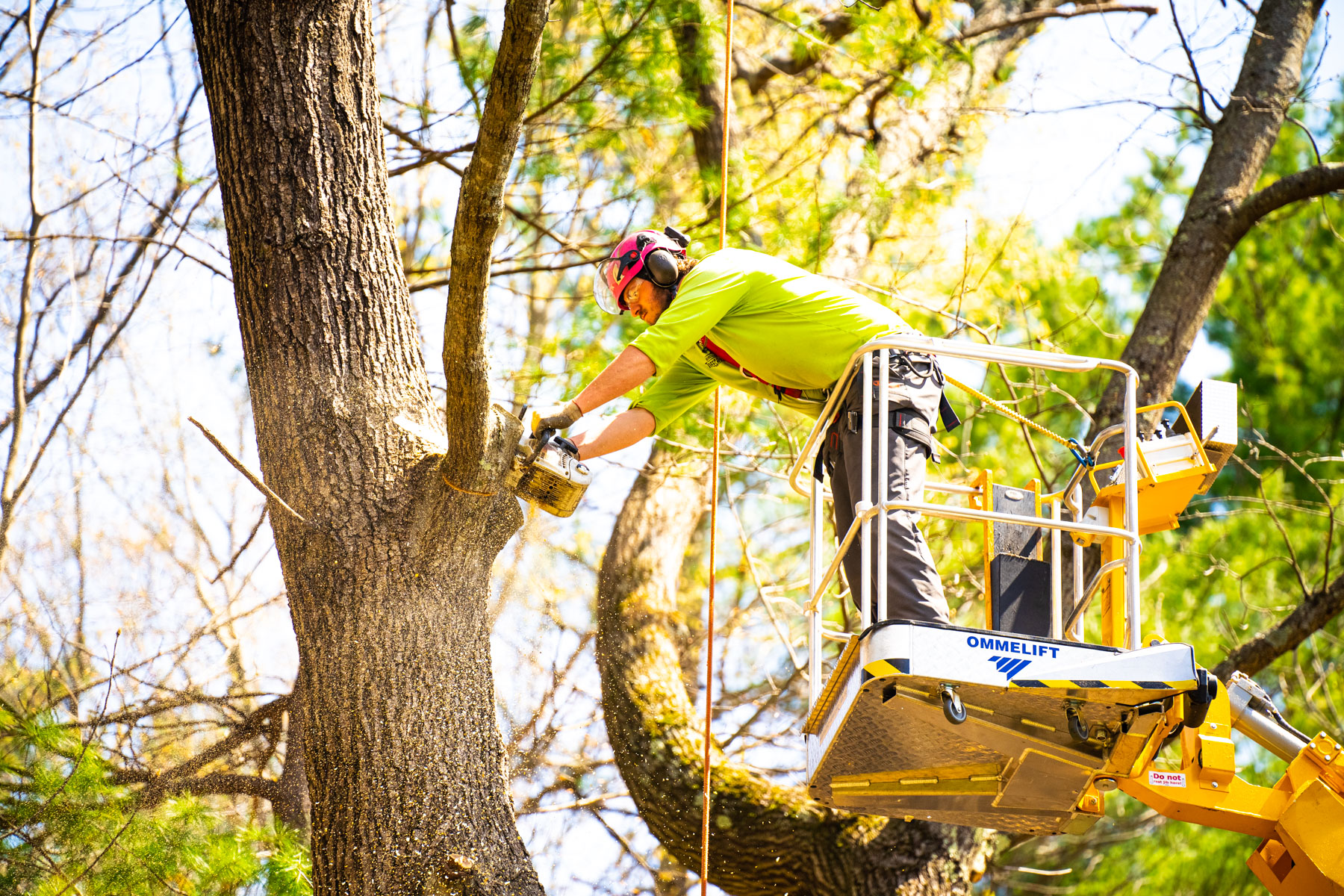
How to Care For Your Trees: A Year-Round Guide to Tree Maintenance in New England
The trees on your New England property are a valuable asset. They provide you with many benefits including aesthetic appeal, shade, personal enjoyment, wind and privacy screening, and so much more. You want to be able to enjoy your trees for many years to come, which is why tree health is so important.
There’s actually quite a bit involved in caring for trees, some of which isn’t always given a lot of thought. People tend to assume that trees are largely self-sustaining, but this isn’t the case. Healthy trees require services like pruning, fertilization, watering, and more to continue to perform optimally.
In this guide, we will cover how to care for trees in a way that will promote longevity and overall good tree health. We’ll share everything you need to know to provide comprehensive, year-round tree maintenance to protect the valuable investment you have in these assets.
Hopefully, with these tree care tips, you’ll be on your way to maintaining healthy trees that you can enjoy for years to come.
Table of Contents
Understanding Tree Health
Spring Tree Care Tips
Caring for Trees in Summer
Fall Tree Care Essentials
Winter Tree Care and Protection in New England
DIY Tree Care vs. Hiring a Tree Care Company
Choosing the Right Tree Service
Understanding Tree Health
A healthy tree has strong roots, intact bark, vibrant leaves, and healthy branches. On the flip side, an unhealthy tree might have broken or hanging limbs, various leaf problems, or issues with the roots or bark.
We’ll get more into potential tree problems as this guide goes along but it’s important to understand why tree health matters.
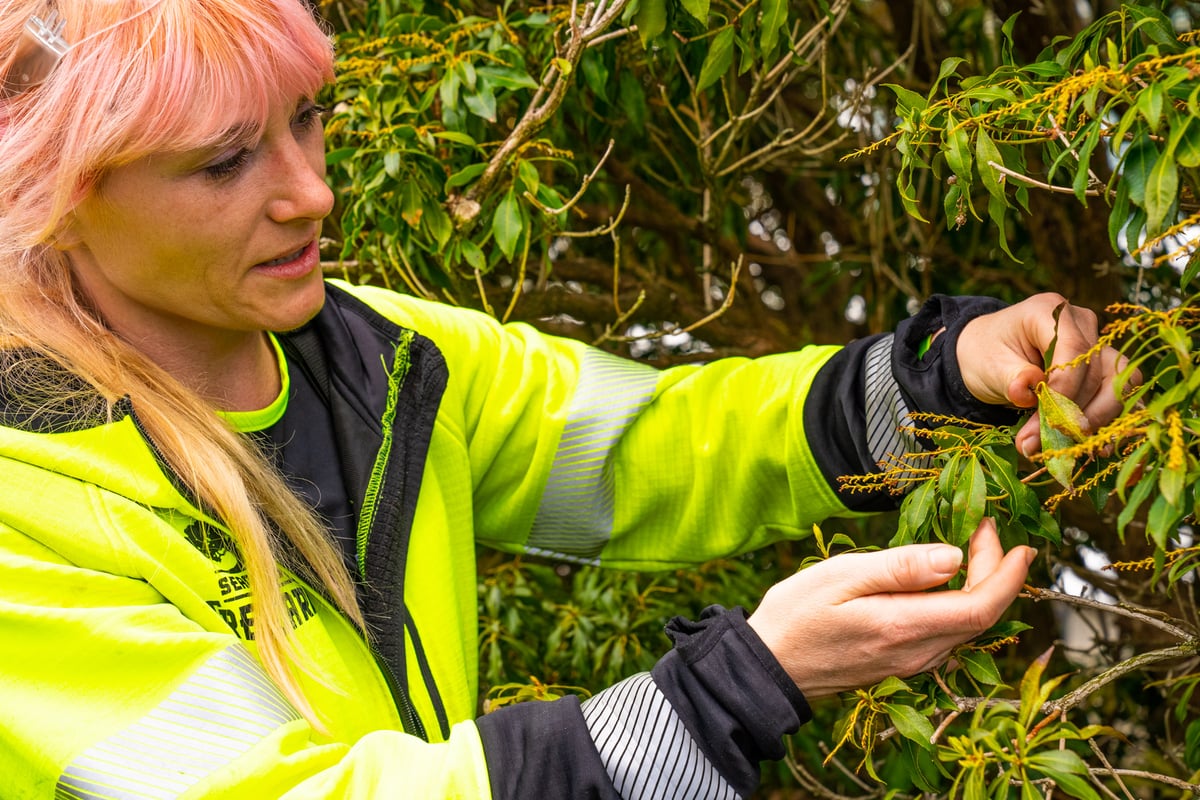
The health of your trees now is critical to their long-term success (or potential failure), making regular care like fertilization critical. If your tree is struggling, you could risk greater problems down the road. For instance, if a weakened limb falls, that can cause damage to your property (or even worse, to a person). But there’s much that can be done to help prevent your tree from reaching that point.
Sometimes a tree can be declining without you realizing it. Since a tree’s canopy is far from the ground, it’s not uncommon for homeowners to have no idea that there’s trouble brewing in their tree. By the time they notice the first sign of trouble, it could already be in really bad shape.
This is why taking care of trees should be an ongoing effort involving tree experts. When a tree care expert is coming to perform valuable tree maintenance services, they’re also assessing your tree for signs of trouble.

Trees can be subject to problems like disease or pests, many of which do have solutions. But in order to implement the best solution, the problem needs to be identified. A big part of taking care of trees is looking for signs of trouble so that they can be spotted and addressed early.
Since tree care needs can differ based on their species and the season (and we have dramatically different seasons here in the Northeast), we’ll take a closer look at each season and how it impacts tree maintenance.
Spring Tree Care Tips in New England
Spring is the start of the active growing season for New England trees. With longer, warmer days, you’ll notice the growth of new buds and blooms. This is a wonderful time of the year to enjoy trees’ beauty.
Of course, spring is also an important time to make sure that your trees are getting what they need. As trees come out of a state of dormancy and start actively growing, they can also be subject to more problems.

Tree maintenance in the spring includes tasks like mulching and watering, fertilization (including deep root injections), and assessing for signs of trouble. Let’s talk about how these various tasks help promote healthy trees.
Mulching and Watering Trees
Mulching and watering trees are two important tree maintenance tasks that can help promote good health. Mulched tree rings can help to insulate and protect roots and will also help the soil to retain precious water.
The key to mulching is applying the correct amount and avoiding piling mulch up against the trunk. This is a common but improper practice that leads to “mulch volcanoes.” When you mound mulch up like this (resembling a volcano), it can require a restoration service called root collar excavation down the line.
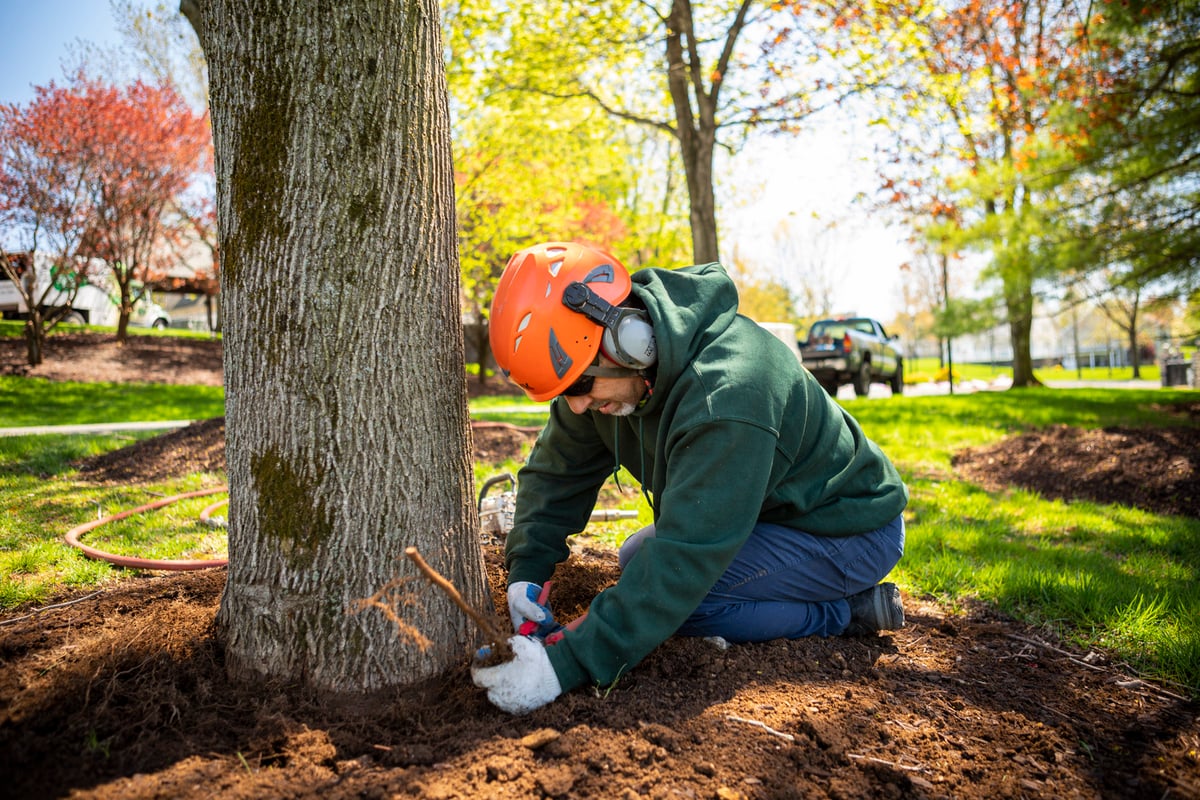
Watering properly is also important. Trees need moist soil to survive. However, too much water can also lead to trouble like root rot. Signs of an overwatered tree include soggy soil, mushroom growth, moss, and yellowing leaves.
Tree Fertilization
Another important tree maintenance task is tree fertilization. Tree fertilization provides important nutrients that can boost health and performance. Your trees and shrubs are only as healthy as the soil they’re growing in.
We combine organic fertilizer that is low in nitrogen with biostimulants to introduce healthy microorganisms into your soil with our fertilization service. This provides the best possible growing conditions.
When trees are fertilized they tend to grow stronger and healthier. Fertilization helps to stimulate growth and you may find that your healthy trees are now growing fuller and more robust. When trees are strong and healthy, they’re also better able to resist problems.
Assessing for Signs of Trouble
Trees should be periodically assessed for signs of possible trouble. This is easier done in the winter (which we’ll talk about in that section) because there are no leaves. However, the spring and summer are when problems with diseases (like Apple Scab) and pests become active, so you must remain vigilant during these times.
Unfortunately, sometimes these types of problems are not overtly noticeable to homeowners. It makes sense to work with a tree care professional to ensure that your trees are in good shape.
Caring for Trees in Summer
The summer can be a particularly tough time on your landscape as the weather heats up and drought conditions become more common. Thunderstorms are also a common occurrence during New England summers, but can sometimes also pose problems for trees.

Here are some tree care tips to keep in mind during the summer months.
Proper Watering
The summer is when proper watering is critical. During the hot and dry months, you might need to supplement with additional water if Mother Nature is not supplying it.
Healthy trees require around one inch of water per week.
Water should be delivered slowly and steadily so that it can percolate down to the root zone where it is needed the most. A slow-release watering bag is a great way to deliver water to trees.

The proper amount is key. We mentioned that the signs of an overwatered tree include soggy soil, yellow leaves, and mushroom or moss growth. You should also know the signs of a drought-stressed tree during the summer months.
Signs of a drought-stressed tree include:
- Dry or cracked soil
- Leaves that look like they’re drying up. It can be confusing as they may first turn yellow (also a sign of overwatered trees, so look for additional symptoms, like the condition of the soil)
- Leaves that are wilted or curled
- Cracking bark
- Twig dieback
If trees suffer for prolonged periods, they can eventually die. It’s always important to have trees evaluated by a professional if they are showing signs of problems. \
Assessing for Signs of Trouble
Keeping an eye on trees in the summer is important as certain diseases and pests can be more prevalent during this time.
Pests, in particular, tend to strike a tree when it is already struggling. That means that if your tree is experiencing drought stress and is in a weakened state, it might be more prone to problems. It will also have a more challenging time recovering from problems.
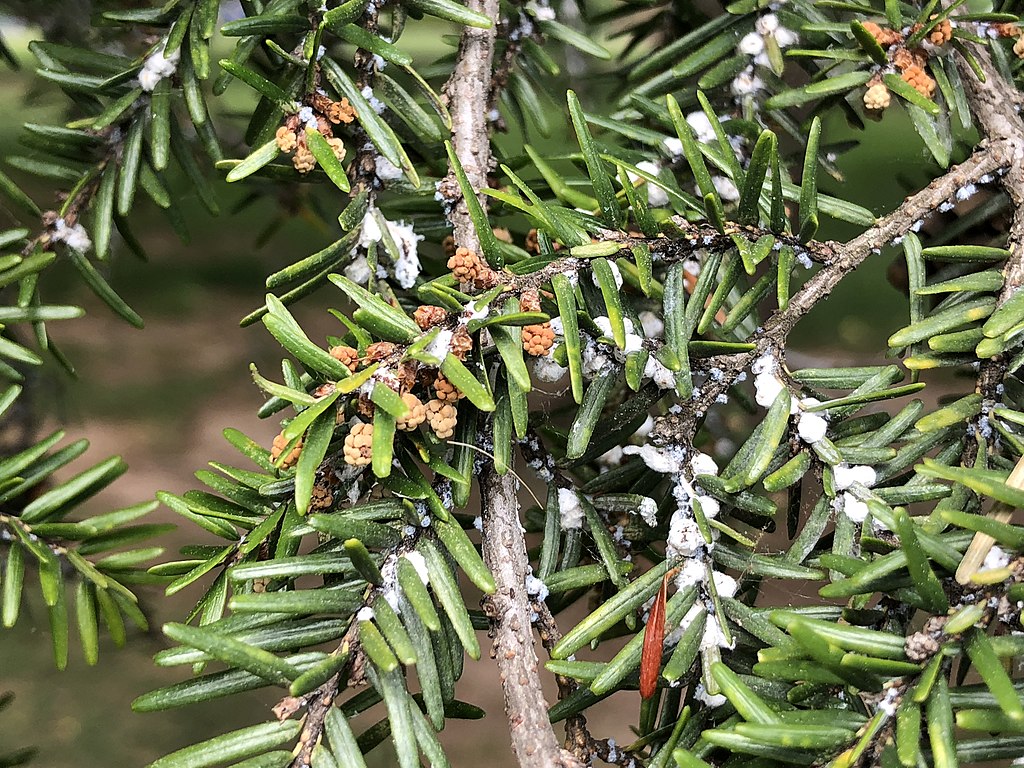
Storm damage is also a possibility in the summer when intense thunderstorms are likely to occur. Trees that have been struck by lightning or suffered wind damage can become a hazard. If there’s any concern that your tree might have suffered storm damage, it makes sense to have it assessed by a professional. Hanging or weakened limbs can become a serious threat if left unchecked.
Fall Tree Care Essentials
As summer draws to an end, temperatures will start to cool down and deciduous trees will begin their magnificent shifts in color. For many, this is a favorite time of the year for trees in the Northeast.
In fact, New England tends to see a major influx of visitors who are there for “leaf peeping.”
Leaf peeping is an informal term that means viewing and photographing the changing foliage. It has become particularly popular in recent years with social media sites promoting beautiful fall colors. Now, more than ever, we see lots of out-of-towners flocking to our region.
If your trees already started losing leaves before this peak season, it's very likely that there is some underlying issue affecting the health of your tree. In cases such as this, an arborist can help diagnose and solve these problems.
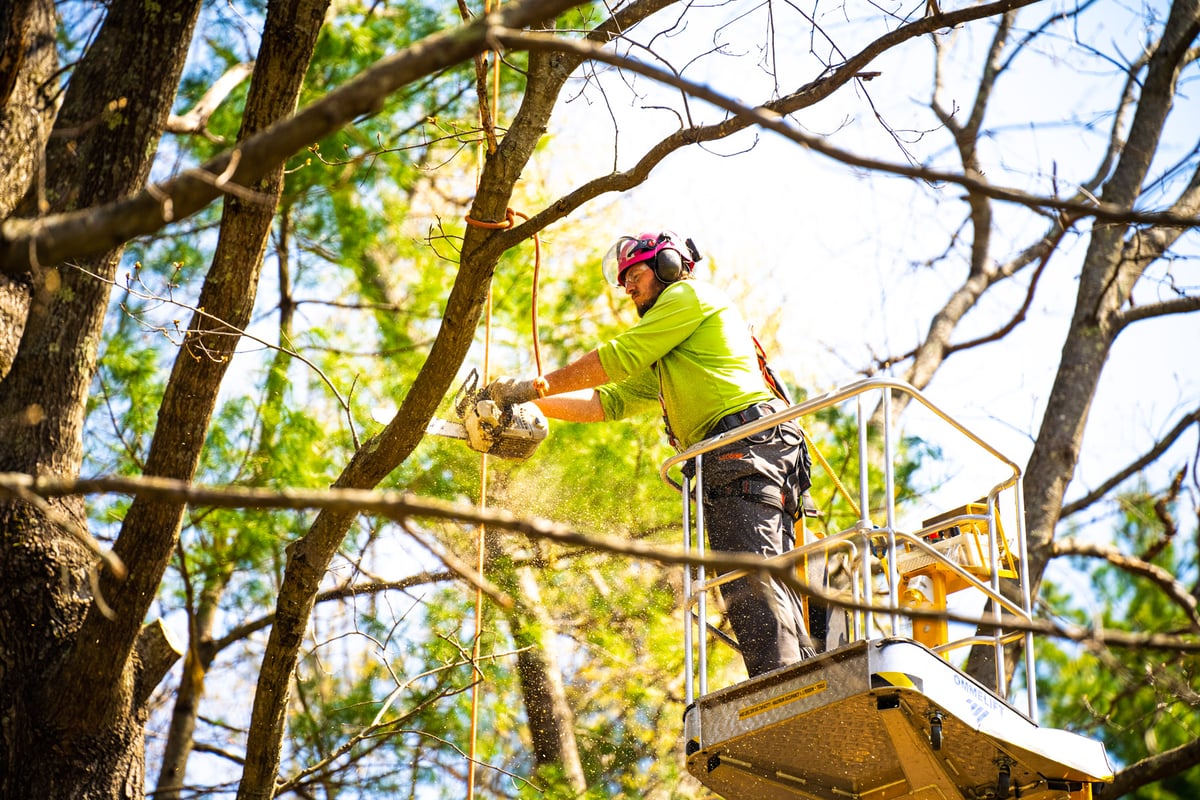
As far as how to take care of trees in the fall, it’s largely a continuation of what you’ve already been doing like proper watering and fertilization. Let’s look at a few specific tree care tips for the fall.
But before we do, we want to mention tree pruning is also an incredibly important service that needs to be done (and hasn’t been mentioned yet). We’re including that under winter tree care since that’s a great time to tackle this (for reasons we’ll explain).
While we often promote dormant pruning, tree pruning can be done at any time of the year. The only season where you need to exercise some caution is the summer since trees might already be experiencing drought stress and pruning can add to that.
Fall Fertilization
Fall is definitely an important time to fertilize your trees as nutrients were likely depleted during those tough summer months. Slow-release fall fertilization helps to provide steady nutrients to your trees during the fall and helps to set them up for success going into the winter months.
Freshen Mulch Rings
You might also want to freshen your mulch rings in the fall to help trees conserve water and protect their roots.
Just as we mentioned previously, you’ll want to make sure that you do not pile mulch against your tree trunk when you perform this service. This can lead to problems that could harm the health of your tree.
Proper Watering
Watering is still important, but you’ll likely be able to back off in the fall when there will be more natural rainfall and less evaporation. The soil tends to remain moist in the fall and trees are under less intense stress with the temperatures dropping. As trees move into dormancy, they’ll require less water.
Prepping for Winter
Finally, we also want to mention that trees sometimes need some extra support going into the winter months. New England winters can be quite harsh with heavy snowfall and ice accumulation. These conditions can take a toll on trees.

If trees have weakened limbs, you might want to consider cabling and bracing. Adding cables and/or braces (steel rods) can give weak limbs added support and reinforce trouble spots. An arborist can determine whether or not a service like this is warranted.
Winter Tree Care and Protection in New England
In the winter, deciduous trees enter a state of dormancy during which they will shed their leaves. While evergreen trees do not enter full dormancy, many will still shed some needles around this time. Even evergreen trees enter a slower state of growth during the winter months.
While trees are not actively growing, there are still some things to keep on your radar about winter tree health, from weather hazards to winter watering.
Watch for Snow and Ice Damage
During the winter, you’ll want to watch out for snow and ice damage to your trees. If a tree ends up severely damaged, it could warrant tree removal, particularly if it is now posing a threat.
At the very least, you’d want to make sure that any hazardous limbs are safely removed.
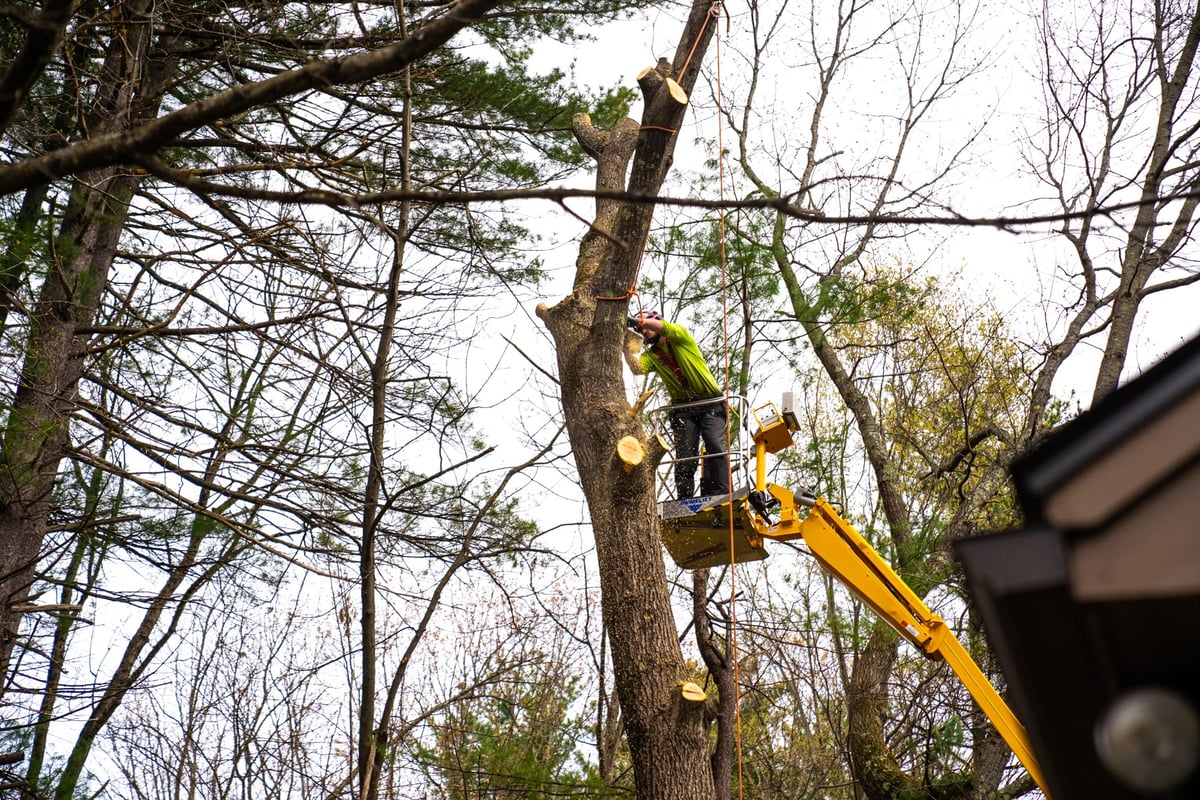
One way to prevent snow and ice damage is with proper pruning (which we’ll talk about in the section below). When already-weak branches are removed during pruning, they are less likely to become a threat during winter storms.
Wrapping younger tree's trunks in preparation for winter can help reduce damage to the bark from freezing temperatures, sunscald, and even deer.
Dormant Pruning
We also said that we’d be talking about tree pruning in this section as the winter is a great time for this service.
Tree pruning is a great winter service because trees are in a state of dormancy where their growth halts. This lack of activity coupled with the fact that trees aren’t dealing with heat and drought, create ideal pruning conditions.
Pruning is one of the best things that you can do to promote healthy trees. That’s because it involves removing diseased, dying, or dead branches that are adding stress to your tree’s life.
But people don’t always realize that pruning itself can be stressful on a tree.
Any time that you are making cuts it does add some stress. And right after a prune, trees are more vulnerable to problems. But because diseases and pests are not active during this time, there won’t be that added threat.
Pruning in the winter also will not disturb growth patterns. Sometimes when pruning a flowering shrub in the spring, you can prevent it from blooming.
As far as how often to prune, there can be a lot of variation depending on a tree’s species, condition, and overall needs. In general tree pruning is more about what a tree might need as opposed to following a set schedule. This can be determined by an arborist.
In general, most mature trees are pruned every 5 to 10 years while younger trees are pruned every 3 to 5 years. But there are always situations that can change those recommendations.
Winter Moth Concerns
Another concern is the winter moth, which is an invasive insect that can wreak havoc on your trees. Adult winter moths typically emerge in November or December to mate. However, the damage occurs in the spring, when the emerging caterpillars start to eat your foliage.
These voracious caterpillars continue to migrate from bud to bud, devouring as much as they can. When feeding ends in mid-June, the caterpillars fall to the ground to pupate and emerge as moths.
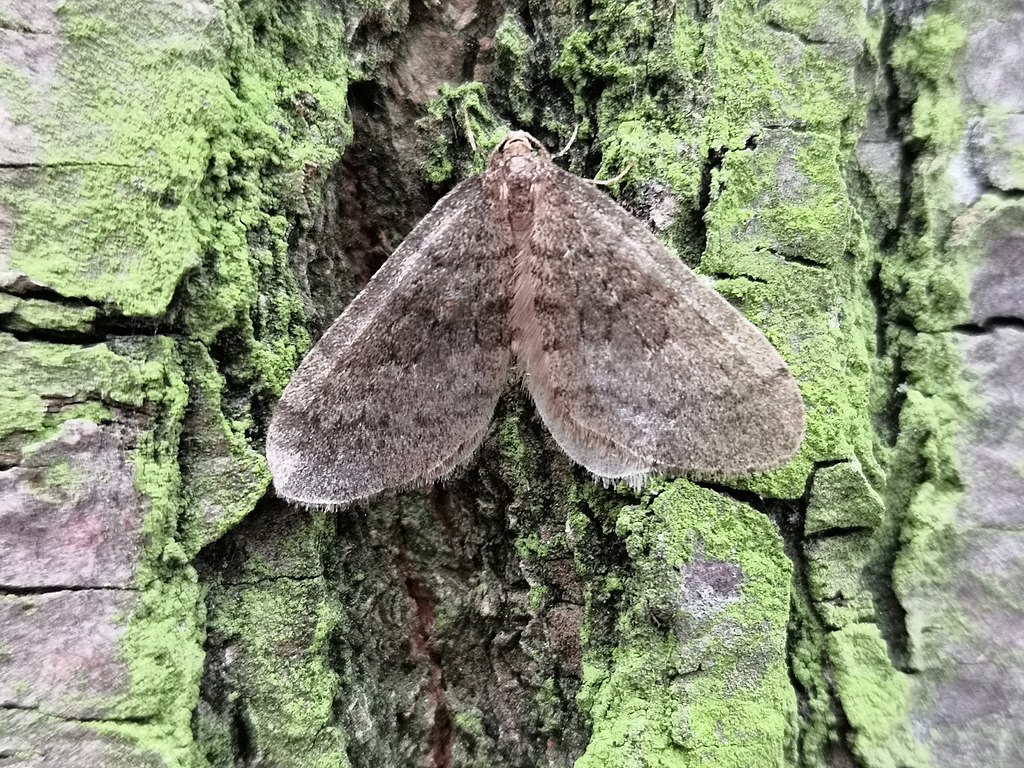
A non-chemical option for dealing with the winter moth in New England is tree banding. This involves placing a sticky band around the trunk of the tree in early to mid-November. This will prevent female moths from crawling up the tree to lay eggs.
Dormant horticultural oil can also be used from November to January for effective winter moth prevention.
DIY Tree Care vs. Hiring a Tree Care Company
Caring for trees is often a combination of DIY tasks like watering and mulching along with professional services like tree pruning, tree fertilization, disease and pest control, and tree removal (if necessary).
There are a lot of benefits to hiring a tree care professional as opposed to trying to tackle everything yourself.
Getting the Job Done Quickly
One of the worthwhile benefits of professional tree care is that the work is going to be done quickly. This might not seem like that big of a deal until you have a partially completed job done in your yard because it was more than you could handle in your free time.
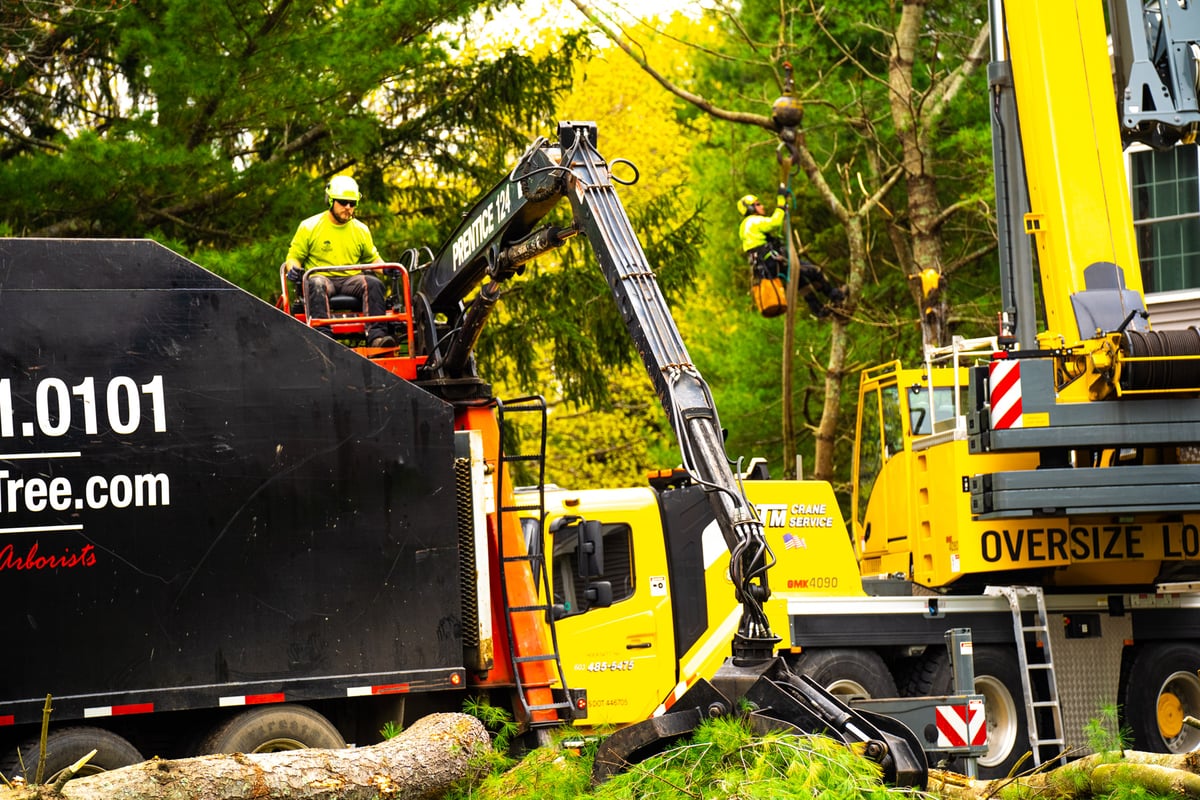
We see this all of the time as we’re called in to finish partial tree work that homeowners simply didn’t have time to finish with their busy schedules.
Getting the Job Done Right
Another significant benefit is making sure the tree work is done right. Tree maintenance work can be complicated. For instance, with a service like tree pruning, there is quite a bit of horticultural know-how that must be executed. When mistakes are made, you can do more harm than good.
But a tree care professional will know exactly which branches to cut to have the most impact. There is not only an aesthetic benefit to pruning but also a health benefit, too. When you prune away dead, dying, or diseased branches, it helps restore energy to the rest of the tree. It also isolates problems and prevents them from spreading and impacting the tree as a whole.
Getting the Job Done Safely
Finally, it’s important to know that taking care of trees can sometimes involve dangerous work. Services like tree pruning and tree removal, in particular, are complex and potentially hazardous.
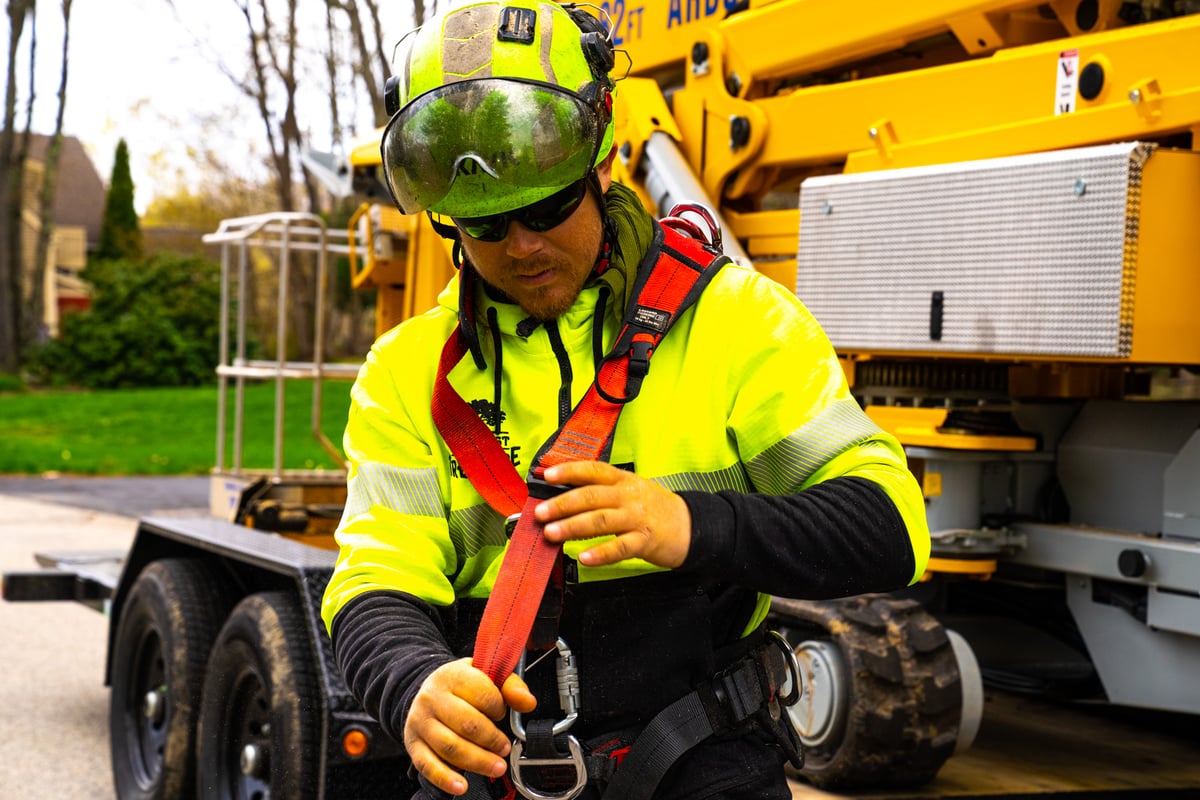
However, a tree care professional will understand all of the safety precautions and the best practices that should help you avoid accidents and mishaps. A mistake can be detrimental if it leads to a branch falling on a structure or, even worse, a person.
Choosing the Right Tree Service
Getting the best care for trees boils down to choosing the best tree care service. In order to make sure that you are choosing wisely, you’ll need to do some research on the companies you are considering.
As you research your options, look for a company that employs Certified Arborists. These are individuals who are not only trained but also certified in the field.
We also recommend that you ask companies to verify their insurance coverage. You would never want to be liable for an accident because of choosing a company that did not have proper coverage.
Spend some time on tree service companies’ websites and also look at their online reviews. Social proof is always a great way to back up a tree care company’s claims. You want to choose a company that has satisfied customers so that you can ensure you’ll end up with healthy trees.
Healthy Trees with Year-Round Tree Care
When you make a wise choice in tree care companies, you can let go of the worries associated with taking care of trees and simply get back to enjoying them for all of the benefits they have to offer.
With the right company, you’ll ensure your trees are getting the proper care all year long. As you can tell from this guide, different times of the year can mean different needs for your trees. But a tree care expert will know exactly what’s needed.
At Seacoast Tree Care, we’re committed to preserving the health and beauty of trees in New Hampshire, Maine, and Massachusetts by performing vital services like tree pruning, tree removal, and general tree care the right way. We’re also here to offer helpful tree care tips so that you can be well-educated on what your trees need.
When you make a wise choice in tree services, you’ll ultimately take an important step in protecting the value of your property’s trees.
Ready for safer and healthier trees at your New Hampshire, Maine, or Massachusetts home? Request your consultation and get a free quote for tree pruning services. We service properties in and around Stratham, NH, Kittery, ME, and Haverhill, MA. By making a wise choice, you’ll know your trees are in good hands.



